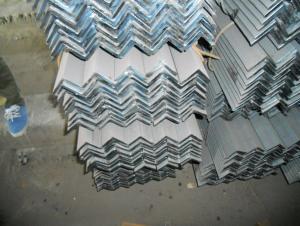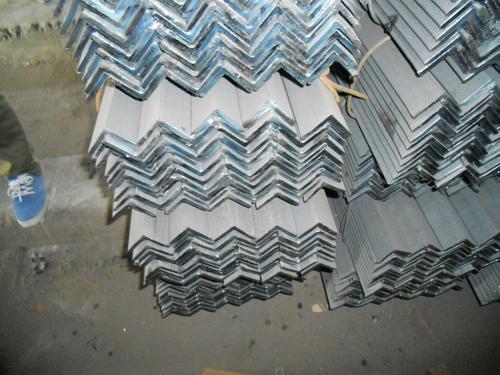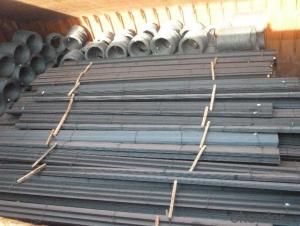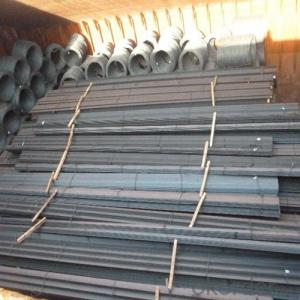jisangle
- Loading Port:
- China Main Port
- Payment Terms:
- TT OR LC
- Min Order Qty:
- -
- Supply Capability:
- -
OKorder Service Pledge
OKorder Financial Service
You Might Also Like
Product Description:
Specifications of GB Q235 Angle Steel
1. Standards: GB,ASTM,BS,AISI,DIN,JIS
2. Invoicing on theoretical weight or actual weight as customer request
3. Material:Material: GB Q235B, Q345B or Equivalent; ASTM A36; EN 10025, S235JR, S355JR; JIS G3192, SS400;
SS540.
4. Sizes:
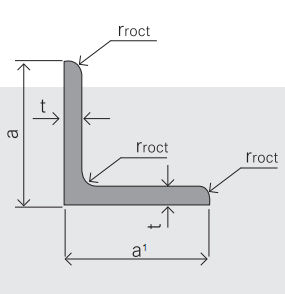
Sizes: 25mm-250mm | ||
a*t | ||
25*2.5-4.0 | 70*6.0-9.0 | 130*9.0-15 |
30*2.5-6.6 | 75*6.0-9.0 | 140*10-14 |
36*3.0-5.0 | 80*5.0-10 | 150*10-20 |
38*2.3-6.0 | 90*7.0-10 | 160*10-16 |
40*3.0-5.0 | 100*6.0-12 | 175*12-15 |
45*4.0-6.0 | 110*8.0-10 | 180*12-18 |
50*4.0-6.0 | 120*6.0-15 | 200*14-25 |
60*4.0-8.0 | 125*8.0-14 | 250*25 |
5. Material details:
Alloy No | Grade | Element (%) | |||||
C | Mn | S | P | Si | |||
|
|
|
|
|
|
| |
Q235 | B | 0.12—0.20 | 0.3—0.7 | ≤0.045 | ≤0.045 | ≤0.3 | |
|
|
|
|
|
|
| |
Alloy No | Grade | Yielding strength point( Mpa) | |||||
Thickness (mm) | |||||||
≤16 | >16--40 | >40--60 | >60--100 | ||||
≥ | |||||||
|
|
|
|
|
| ||
Q235 | B | 235 | 225 | 215 | 205 | ||
Alloy No | Grade | Tensile strength (Mpa) | Elongation after fracture (%) | ||||
Thickness (mm) | |||||||
| ≤16 | >16--40 | >40--60 | >60--100 | |||
≥ | |||||||
|
|
|
|
|
|
| |
Q235 | B | 375--500 | 26 | 25 | 24 | 23 | |
Usage & Applications of GB Q235 Angle Steel
Trusses;
Transmission towers;
Telecommunication towers;
Bracing for general structures;
Stiffeners in structural use.
Packaging & Delivery of GB Q235 Angle Steel
1. Transportation: the goods are delivered by truck from mill to loading port, the maximum quantity can be loaded is around 40MTs by each truck. If the order quantity cannot reach the full truck loaded, the transportation cost per ton will be little higher than full load.
2. With bundles and load in 20 feet/40 feet container, or by bulk cargo, also we could do as customer's request.
3. Marks:
Color mark: There will be color marking on both end of the bundle for the cargo delivered by bulk vessel. That makes it easily to distinguish at the destination port.
Tag mark: There will be tag mark tied up on the bundles. The information usually including supplier logo and name, product name, made in China, shipping marks and other information request by the customer.
- Q: Bearing capacity of angle steel and channel steel
- Channel steel is a strip of steel with a cross section. Section steel with groove shape.Channel steel is a kind of carbon structural steel used for construction and machinery. It is a complex section steel. Its cross section has a groove shape. Channel steel is mainly used in building structure, curtain wall engineering, mechanical equipment and vehicle manufacturing, etc.. In use, it requires better welding, riveting performance and comprehensive mechanical properties. The raw material steel billet for channel steel is carbon or low alloy steel billets with a carbon content of not more than 0.25%. The finished channel steel is delivered by hot forming, normalizing or hot rolling. The specifications are expressed in millimeters of height (H) * leg width (b) * waist thickness (d), such as 100*48*5.3, which means waist height is 100 mm, leg width is 48 mm, waist thickness is 5.3 mm channel, or 10# channel steel. The same height of the channel, if there are several different leg width and waist thickness, also need to add a, B, C on the right side of the model to distinguish, such as 25#a, 25#b, 25#c and so on.Channel steel is divided into ordinary channel steel and light channel steel. Standard Specification for hot-rolled plain channel steel is 5-40#. Specifications for hot rolled flexible channel steel supplied by supply and demand agreement are 6.5-30#. Channel steel is mainly used for building structures, vehicle manufacturing, other industrial structures and fixed plates, cabinets, etc., and channel steel is often used in conjunction with i-beam.
- Q: What are the different types of steel angle connections?
- There are several different types of steel angle connections, including bolted connections, welded connections, and hybrid connections. Bolted connections involve using bolts and nuts to connect steel angles together. Welded connections involve melting the steel angles together using heat and a welding process. Hybrid connections combine elements of both bolted and welded connections, using a combination of bolts and welding to secure the steel angles together.
- Q: How do you prevent rust on steel angles?
- To prevent rust on steel angles, there are several steps you can take: 1. Apply a protective coating: One of the most effective ways to prevent rust is to apply a protective coating on the steel angles. This can be done using paint, varnish, or other corrosion-resistant coatings. Make sure to choose a coating that is specifically designed for preventing rust on steel surfaces. 2. Use galvanized steel angles: Galvanization is a process where a layer of zinc is applied to the steel, providing a protective barrier against rust. Using galvanized steel angles can significantly reduce the risk of rust formation. These angles are readily available in the market and are a popular choice for outdoor applications. 3. Keep moisture away: Rust formation is accelerated by moisture, so it is crucial to keep steel angles dry. Avoid exposing them to rain, humid environments, or excessive moisture. If the angles are installed outdoors, ensure proper drainage and provide adequate ventilation to prevent the buildup of moisture. 4. Regular cleaning and maintenance: Regularly cleaning the steel angles will help remove any dirt, dust, or other contaminants that can contribute to rust formation. Use a mild detergent or cleaning solution and a soft cloth or sponge to clean the surface. After cleaning, make sure the angles are completely dry before applying any protective coating. 5. Monitor and repair damaged coatings: Over time, protective coatings may get damaged due to wear and tear or exposure to harsh conditions. It is essential to monitor the condition of the coatings and repair any damaged areas promptly. This will help maintain the integrity of the protective layer and prevent rust from forming. 6. Consider using stainless steel angles: Stainless steel is highly resistant to rust and corrosion due to its chromium content. If rust prevention is a top priority, you may consider using stainless steel angles instead of regular steel. Although stainless steel angles are typically more expensive, they offer superior durability and a longer lifespan. By implementing these preventive measures, you can significantly reduce the risk of rust formation on steel angles, ensuring their longevity and maintaining their structural integrity.
- Q: Are steel angles resistant to corrosion?
- Generally, steel angles exhibit resistance to corrosion. Typically, steel angles are manufactured from carbon steel or stainless steel, both of which possess inherent properties that resist corrosion. Carbon steel angles develop a protective layer of iron oxide, commonly known as rust, when exposed to oxygen and moisture. This rust layer acts as a barrier, preventing further corrosion of the underlying metal. Conversely, stainless steel angles contain at least 10.5% chromium, which results in the formation of a thin, transparent oxide layer on the surface. This oxide layer, referred to as a passive film, offers exceptional corrosion resistance, making stainless steel angles highly resistant to rust and other forms of corrosion. Nevertheless, it is essential to acknowledge that steel angles can still corrode under specific conditions, such as prolonged exposure to high levels of moisture or corrosive chemicals. To enhance the corrosion resistance and prolong the lifespan of steel angles, regular maintenance and proper cleaning are imperative.
- Q: How do you reinforce a steel angle for added strength?
- There are various ways to reinforce a steel angle for added strength. One effective technique involves welding additional steel plates or gussets to the flanges of the angle. These plates or gussets are typically placed perpendicular to the angle and welded along their edges to create a stronger connection. This helps distribute the load and improve the structural integrity of the angle. Another approach is to create a sandwich-like structure by bolting or riveting additional steel plates or angles to the existing one. These additional elements can be positioned on either side or even on top of the existing angle, depending on the specific requirements. Bolting or riveting them together ensures a secure connection and enhances the overall strength of the angle. Furthermore, bracing techniques can also be employed to reinforce a steel angle. This involves adding diagonal steel members, commonly known as braces, to the angle. The braces are typically attached to the angle at multiple points using welding or bolting methods. By doing so, these braces help redistribute the forces acting on the angle and prevent excessive deflection or bending, thereby increasing its strength. It's important to consider factors such as the load or force the angle will experience, the desired level of strength, and the available resources when choosing a specific reinforcement method. Seeking guidance from a structural engineer or a professional in the field is highly recommended to ensure the appropriate reinforcement technique is chosen and implemented correctly.
- Q: How do steel angles contribute to the sustainability of a city?
- The sustainability of a city is greatly enhanced by the presence of steel angles, which offer numerous benefits. Firstly, steel angles are essential in the construction industry, as they are utilized in the fabrication of buildings, bridges, and other infrastructure. Steel is renowned for its strength, durability, and ability to withstand external factors like corrosion and fire. With the use of steel angles in construction projects, cities can guarantee the longevity and safety of their structures, thereby reducing the need for frequent maintenance or replacement. This results in a significant reduction in resource consumption over time, thus enhancing the city's sustainability. Moreover, steel angles provide architects and engineers with design flexibility, enabling the creation of innovative and efficient structures. Their versatility allows for the construction of sustainable buildings that incorporate energy-efficient designs, natural lighting, and effective insulation. By incorporating steel angles into the construction process, cities can actively promote sustainable practices and decrease energy consumption, consequently contributing to a more sustainable urban environment. Furthermore, steel is a highly recyclable material, boasting a recycling rate of approximately 90%. By integrating steel angles into construction projects, cities can actively participate in a circular economy by promoting the recycling and reuse of steel products. This practice reduces the demand for raw materials and minimizes waste, thereby lessening the environmental impact of construction projects. The utilization of recycled steel also aids in energy conservation and the reduction of greenhouse gas emissions associated with the production of new steel. In conclusion, the inclusion of steel angles plays a pivotal role in fostering the sustainability of a city. These angles provide durable and long-lasting structures, facilitate energy-efficient designs, and encourage the recycling and reuse of materials. By embracing steel angles in construction projects, cities can establish sustainable infrastructure that positively impacts the environment and the community as a whole.
- Q: What is the maximum length of a steel angle available in the market?
- The market offers steel angles in varying lengths based on the supplier and the specific type of steel angle. Generally, lengths for steel angles range from 20 feet (6.1 meters) to 40 feet (12.2 meters). It is worth mentioning that these lengths are commonly found for standard steel angles, but there may be customized options that surpass these lengths for specific projects or applications. It is recommended to consult the supplier or manufacturer to ascertain the maximum length available for a particular steel angle.
- Q: How can steel angles be cut to size?
- Steel angles can be cut to size using various methods such as sawing, shearing, or plasma cutting.
- Q: Which is cheaper, angle iron or steel pipe?
- Steel tube (Steel pipe) production technology development began in the bicycle manufacturing industry, the rise of the early nineteenth Century during the oil development, the two world war ships, boilers, aircraft manufacturing, manufacturing of power boiler after the Second World War, the development of chemical industry of petroleum and natural gas drilling and transportation, will effectively promote the the yield and quality of varieties, the development of steel tube industry.
- Q: Can steel angles be used for architectural detailing or ornamentation?
- Yes, steel angles can be used for architectural detailing or ornamentation. They are commonly used to add structural support, create unique design elements, and enhance the aesthetic appeal of buildings. Their versatility, strength, and durability make them suitable for various architectural applications.
Send your message to us
jisangle
- Loading Port:
- China Main Port
- Payment Terms:
- TT OR LC
- Min Order Qty:
- -
- Supply Capability:
- -
OKorder Service Pledge
OKorder Financial Service
Similar products
Hot products
Hot Searches
Related keywords
